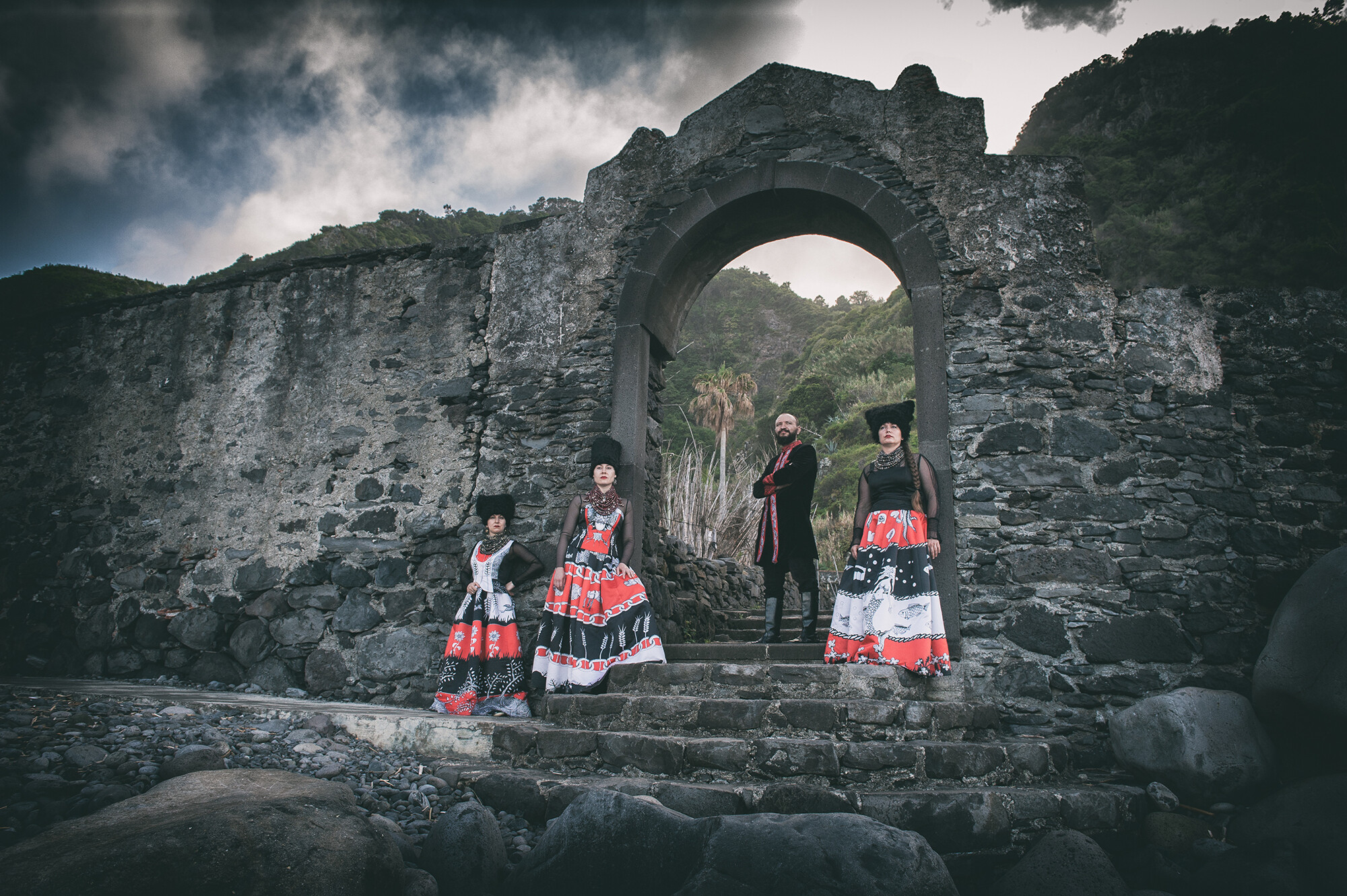
(From left) Doctoral student Hannah Yamagata, research assistant professor Kushol Gupta, and postdoctoral fellow Marshall Padilla holding 3D-printed models of nanoparticles.
(Image: Bella Ciervo)

Since Russia’s full-scale invasion of Ukraine in Feb. 2022, much damage has been done to the nation’s cultural sites—at least 342 of them, according to a UNESCO assessment, encompassing everything from religious sites to museums.
But this tangible culture heritage—a category designated by UNSECO—is only one side of the coin. It’s the intangible culture that Penn Live Arts, through “Ukraine: The Edge of Freedom,” hopes to call attention to through a series of performances that apply or contemporize folk traditions from Ukraine.
The performances take place from Feb. 25 to March 3 at the Annenberg Center for the Performing Arts and were inspired by a trip to Berlin by Executive & Artistic Director Christopher Gruits, who was a 2021 Eisenhower Fellow. Russia’s invasion happened during his visit, and he was affected by the scenes of refugees coming to Germany. After touring an art gallery that specialized in Ukrainian art, he was motivated to bring Ukraine’s culture of music and dance to Philadelphia, especially considering the city’s sizable Ukrainian American community.
“I think this is a great example of why Penn Live Arts, and Penn more broadly, is such an important part of this ecosystem of presenting performance,” says Gruits. “Because if they aren’t presented for the public, they can fall away. Preserving that heritage is really important to us, and when we think about presenting international work on campus, in many cases it’s maintaining a tradition and that artist’s work.”
The series will open with Balaklava Blues, a popular Ukrainian act that fuses traditional folk music and transnational EDM with war-related themes of displacement, trauma, and identity. Continuing the series is Fima Chupakhin, a Ukrainian jazz pianist who will debut a commissioned work, “The Song of Tomorrow,” dedicated to the resilience of the Ukrainian people. Rounding out the series is a community day on March 3 that, among other local Ukrainian American performers, includes students from Philadelphia Performing Arts, a String Theory charter school. That day will culminate in a performance by DakhaBrakha, another popular Ukrainian group, from Kyiv, that fuses folk melodies with genres like pop and hip-hop and implements traditional instruments.
Amidst these performances, on March 1, is also musician, actress, and activist Mariana Sadovska. Sadovska has taught vocal workshops around the world and, in 2008, was a Fulbright scholar. The piece she will perform, “The Night is Just Beginning,” was inspired by a trip to the eastern Donbas region in 2015 and 2016, during which she visited two villages and experienced musical traditions that endured despite the destruction in the region—stretching back to famines in the 1930s as part of the period of collectivization under Joseph Stalin.
“For me, it was really important to speak and give a voice for people living there and to let the audiences in Europe and America [know about them],” says Sadovska.
The performance is a journey through the Donbas region that will include traditional Ukrainian vocals, field recordings, electric keyboard, as well as elements of theater and storytelling. It’s part of a broader effort, she says, to support resistance in Europe and elsewhere by generating empathy, support, and solidarity. Along with her husband, a theater director, she invites Ukrainian artists to Europe for festivals, panel discussions, concerts, and more, to bridge gaps in cross-cultural understanding.
“[Performances like these] help us understand that when you’re reading the news, Ukraine is at war and it seems to be an entity, but then you realize it’s people,” says Claudia Tordini, who co-teaches Art as Intercultural Dialogue for the SNF Paideia Program at Penn, alongside Fanchon Silberstein. “These are people with values, with history, with families, and with artistic inclinations—it humanizes our perception of the country.”
Because an art form like music lacks a physical form, Tordini says, it needs to be performed or recorded to maintain itself. And, ideally, is put in dialogue with new audiences like those at Penn Live Arts to spark questions that might provide deeper answers, extending the reach and life of the tradition.
“There will be destruction, there will be loss, but as long as there are people taking in information, memory, family life, the stories of older people, something is retained,” adds Silberstein. “And I think in Ukraine’s case, there’s been so much human loss, and yet there are people around who have known those people and who are really holding this culture close.”
Sadovska hopes audiences will come with a hunger to learn and engage.
“I want them to fall in love with Ukrainian music, and I want them to fall in love with such strength that they will not get tired,” Sadovska says. “I will be performing some pieces which I learned in the villages and cities which are now under occupation, and we don’t know what will happen. But I want this music to survive, I want art and Ukrainian culture to survive, this is why we need a lot of love, so that nobody will get fatigued or tired.”

(From left) Doctoral student Hannah Yamagata, research assistant professor Kushol Gupta, and postdoctoral fellow Marshall Padilla holding 3D-printed models of nanoparticles.
(Image: Bella Ciervo)

Jin Liu, Penn’s newest economics faculty member, specializes in international trade.
nocred

nocred

nocred